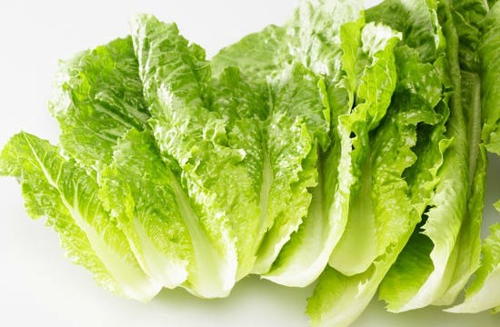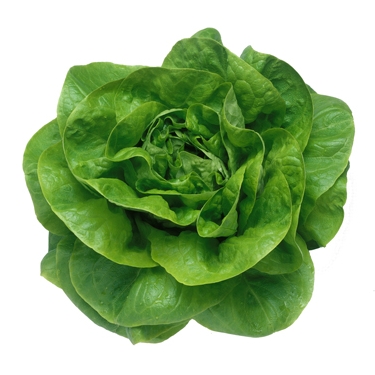Lettuce is one of the oldest domesticated plants – aside, perhaps, from grains – and it’s one that can be found in almost all major cultures an cuisines. We’ve all eaten at least one Green Salad in our time, and most of us enjoyed it. But there’s a lot more to know about lettuce…
 A classic Romain lettuce deconstructed: Inner-most leaves are on the left.
A classic Romain lettuce deconstructed: Inner-most leaves are on the left.
Outer-most on the right. The delicate inner leaves are the reason
the ‘Hearts’ of Romain are so highly prized.
Lettuce is on record as a dietary staple as far back as ancient Rome. It’s believed that it caught on with early diners because it was easy to get. They probably just gathered it in their own yards. After all, it’s really just a highly-bred weed, like other Salad Greens – notably, Spinach, Escarole, Arugula, Cress and even the ubiquitous Dandelion.
Over the centuries, though, discerning diners picked and chose which wild varieties they collected seeds from and replanted. And, now, we’re down to about half a dozen popular types which can be found in most supermarkets. You can get the seeds at any supermarket or garden centre this time of year. but the are really only three basic versions of this timeless green.
Leaf lettuce
It’s just a bunch of separate lettuce leaves, smallish and mild in flavour. Great for Salads, convenient on Sandwiches and easy to use. Just rinse them off and go. You can grow these as easily as scattering seeds on any spare plot of ground in your garden and watering regularly. It grows quickly. Pick what you need as you need it and toss down some more seeds.
Romaine
One of the oldest cultivated Head Lettuces. It appears in records going as far back as the Roman Empire. Tall, long leaves on a common stem, but not really a head. Mild-flavoured but distinctive, with crispy innards, which is why the Heart of the Romaine is especially prized. Use leaves as a bed for Salads, Chop for Salad Greens or slice crosswise to layer on Sandwiches. My go-to leaf for every-day Lettuce needs.
Iceberg
This one is probably the first Lettuce we all ate, as kids. It’s the familiar round Head Lettuce with tightly packed leaves. It’s crunchy but has very little flavour of its own. Maybe that’s why it’s so often used in Salads that want to showcase their Dressings and headline ingredients. Great for shredding if that treatment is called for in your recipes. Always available.
Which brings us to the history of Iceberg and the story of how it got its name. In the early days of the California Vegetable industry, a grower wanted to send major amounts east, to the continent’s biggest markets. But the stuff soon wilted and rusted in hot, sealed train boxcars. So, he got the idea to fill boxcars with ice and nest his lettuces in it, keeping them fresh as the trains made their way across the land. When the train cars were opened, folks fancied that the Lettuces were growing on an iceberg, And the name stuck!
Butter Crisp
Also known as Butter Crunch, Butter Leaf, Boston and Bibb Lettuce. It features small loose heads of round, dark green, sweet, tender leaves. It’s often grown hydroponically these days and shipped in plastic containers to keep the heads safe from shipping damage. This is a very distinctive- looking lettuce and is often used in fancy presentations.
What’s in it for me?
Lettuce, while seemingly bland and insubstantial, is full of essential nutrients, including vitamins A and K, beta-Carotene, Folate and Iron. You’d be doing yourself a favour by just munching a few leaves as a snack! But make a salad with Cheese, Croutons and a Yogurt Dressing. That’s a quick and easy way to get a major hit from all the food groups!
So go on and enjoy your Lettuce. Grow your own, even if all you have is a window box. You’ll be glad you did!
~ Maggie J.

